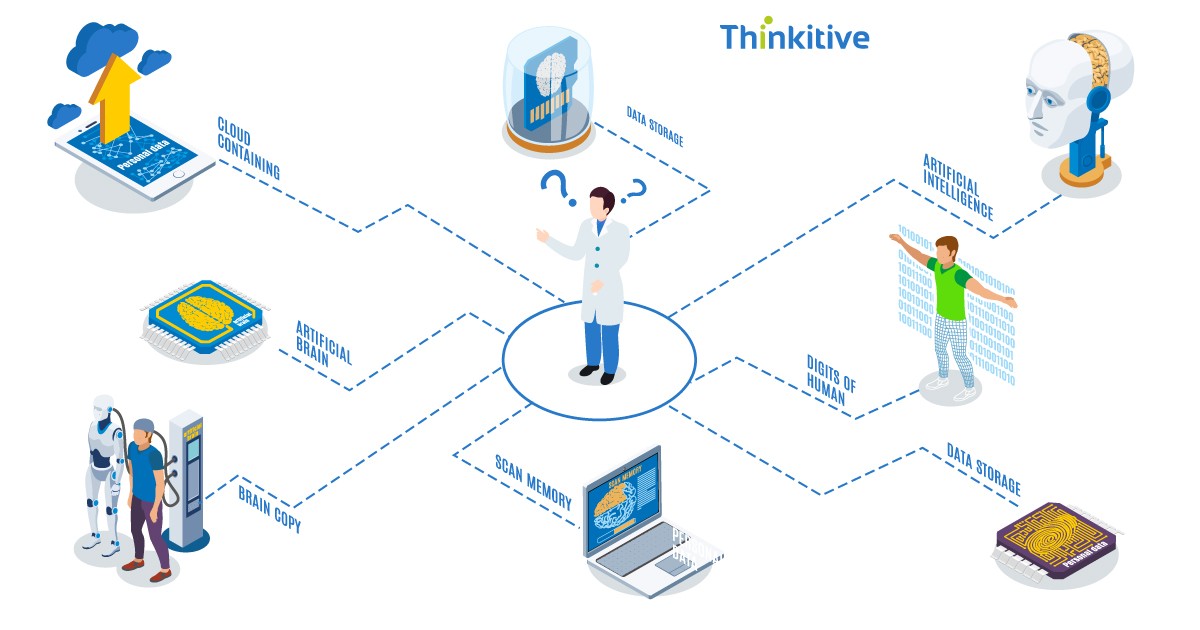Today, the difference between a good and a great healthcare provider has come down to a single word: interoperability. Patients want faster, smarter, and more connected care, and the one to provide it will have a significant competitive advantage.
Whether you’re running a primary care or a large multi-specialty healthcare facility, you must be dealing with a mountain of patient data. And if it is spread across EHRs, labs, and other healthcare systems without the right integration, then it hinders smooth care delivery.
But here’s the good news: with the right healthcare interoperability solutions and proper EHR integration, you can turn this situation into an advantage for you. You can have better care coordination, faster decision-making, and stronger payer partnerships.
Plus, when your systems are integrated smoothly, your staff works efficiently, patients are engaged, and outcomes are boosted. And with value-based care models becoming the core of care delivery, interoperability has become a must.
In this blog, we will explore how having interoperability can become your biggest advantage over your competitors. From reducing duplicate data to speeding up critical decisions and enabling precision medicine, we’ll show how seamless data exchange gives you an edge.
So, let’s dive in!
Patient Experience Excellence: The Ultimate Market Differentiator
Nowadays, patients are expecting the same convenience they get in retail in their healthcare also. However, providing it with disconnected systems is as hard as running a marathon at full speed. So, this is where interoperability comes in.
- Seamless Care Coordination That Feels Effortless: Patient want their care to be continuous and connected. Even if they change providers, they expect medical records, lab reports, and medication to follow them. This means no more repeated tests and wrong medication. When information flows freely, care transitions from primary to specialist; that’s not just convenience, it’s a competitive edge.
- Digital Engagement That Keeps Patients Connected: Along with convenience, patients also want the same digital experience. Healthcare interoperability solutions like patient portals and mobile apps make their experience fast, responsive, and intuitive. They see their healthcare information in real-time, can book appointments, and connect with care teams securely and 24/7.
- Personalized Care That Actually Feels Personal: Personalized care starts with personalized data. With clinicians getting access to patients’ full history and even daily wearable data, they can create better care plans that are tailored for each patient. This leads to better impact, improved outcomes, and patient satisfaction.
- Service Delivery That Sets You Apart: Interoperability reduces wait times and eliminates communication gaps with unified scheduling and care team access. And with this patient’s experience, fast, prompt responses elevate your organization’s reputation and make your practice stand out.
Operational Excellence: Efficiency as a Competitive Weapon
With today’s competitive healthcare landscape, being slow even in one aspect can mean lost revenue and patients. So, having EHR integration that streamlines your operations and brings not only financial but also clinical and administrative gains is quite a big advantage. Here’s how it impacts your organization:
| Focus Area | Interoperability-Driven Advantage |
| Resource Optimization | Eliminates redundant testing and manual tasks, while automating workflows to boost staff productivity. |
| Revenue Cycle Acceleration | Speeds up reimbursements, improves coding accuracy, and reduces claim denials with integrated billing. |
| Scalability & Growth | Supports rapid expansion and onboarding of new sites, providers, and services with standardized data. |
| Compliance & Risk Mitigation | Automates regulatory reporting, enables quality tracking, and centralizes cybersecurity safeguards. |
From real-time data sharing to predictive analytics, interoperability empowers healthcare organizations. It allows you to do more with less while improving your care quality.
Clinical Quality Leadership: Outcomes as Market Positioning
In modern healthcare, clinical outcomes are more than just a way to measure success; they are a powerful market differentiator. Interoperability makes it easier to improve outcomes as you have a full patient history, enabling smarter, faster, and more effective care.
- Evidence-Based Care at Scale: Delivering care while knowing everything about the patients makes it more accurate and faster. Integrated decision support tools guide best practices, while longitudinal outcomes tracking allows for continuous treatment optimization and performance improvement.
- Population Health & Value-Based Care Readiness: Connected systems are the basis for having full patient data, improving population outcomes, and better chronic condition management. Moreover, these interoperability solutions unify clinical, behavioral, and social health data, enabling risk stratification, coordinated care, and proactive outreach. This also allows you to succeed in value-based care models.
- A Platform for Innovation & Research Leadership: When your systems are connected, it opens the door for new innovations and participation in clinical research. The organization that embraces interoperability can support trials, test new models, and adopt innovations faster.
- Safer Care, Stronger Trust: In healthcare, patient safety depends on complete, coordinated information. With healthcare interoperability, this information becomes available and reduces the risk of medical errors, missed allergies, or conflicting treatments. This helps in ensuring providers are always working from the same playbook and enhances not only clinical outcomes but also patient confidence and organizational trust.
In a competitive market, better outcomes are equal to having a great reputation and strong trust, and interoperability is what makes them possible.
Strategic Partnerships & Network Effects
Having good networking is essential for surviving in this competitive healthcare market, and interoperability opens those doors for you. The first thing that helps your organization connect with other providers is care coordination.
With the integrated data sharing and real-time tracking of outcomes, you can easily participate in ACOs and value-based contracts. Plus, providers from the same network can easily communicate with each other and create a unified front for both care delivery and reporting.
Payer partnerships are also strengthened with healthcare interoperability solutions. Its strong analytical abilities make it easy to present accurate records, giving you leverage to secure a favorable contract. Technological partnerships also benefit from this integration.
Whether you partner with a digital startup or with a major vendor launching a pilot project, seamless data exchange makes it easier to maintain smooth collaboration. Moreover, open APIs and integration capabilities turn your organization into a preferred partner.
Another advantage of EHR integration is standardization. With standardized integration platforms, you can easily merge with systems, making your organization more attractive for mergers and acquisitions. Strong interoperability not only shows your robust technical side but also the scalability of your operations.
Even at the policy level, interoperability leadership matters. Health systems with proven integration success often participate in regulatory pilots and public-private partnerships. In short, interoperability just doesn’t connect systems but also opportunities, influence, and strategic growth across the entire healthcare landscape.
Data-Driven Decision Making & Predictive Capabilities
Interoperability is the backbone of smarter healthcare decisions. When data flows freely across systems, it unlocks advanced analytics, real-time visibility, and predictive intelligence that organizations can act on. It changes everything from operational performance to enabling precision medicine, and transforms how healthcare leaders plan, allocate, and respond.
| Focus Area | Interoperability-Driven Advantage |
| Advanced Analytics | Enables real-time dashboards, forecasting, and operational insights to support agile decision-making. |
| Population Health | Identifies community trends, supports SDOH integration, and informs public health interventions. |
| Precision Medicine | Integrates genomic and clinical data to support personalized care, trial matching, and outcome prediction. |
| Competitive Intelligence | Guides strategic planning, service line optimization, and market positioning with performance analytics. |
When data is complete, it becomes fuel for predicting outcomes. With the right interoperability foundation, healthcare organizations can do more than react; they can predict and prevent.
Conclusion
Interoperability has evolved from a necessity to a competitive advantage for healthcare organizations. Without systems that communicate smoothly, many opportunities remain unavailable, and in highly competitive markets, this is not good.
So, if you still haven’t started EHR integration, then it’s time to integrate your systems. Thinkitive has helped more than 100 organizations by successfully integrating their systems. Click here, and let’s get your systems talking with each other now.
Frequently Asked Questions
How can healthcare organizations measure the competitive advantage gained from interoperability investments?
By tracking metrics like referral retention, patient satisfaction scores, reduced duplicate testing, faster care transitions, and market share growth, while benchmarking against competitors who lack seamless data exchange capabilities.
What are the most impactful interoperability capabilities for creating patient experience differentiation?
Capabilities like unified patient portals, cross-provider care summaries, real-time appointment data sharing, and integrated telehealth make care feel coordinated and hassle-free—something patients instantly recognize and value over fragmented systems.
How does interoperability specifically support value-based care and alternative payment model success?
It ensures timely data exchange across care settings, enabling accurate risk scoring, proactive care interventions, and performance tracking—critical for meeting quality metrics and maximizing shared savings or bundled payment reimbursements.
What role does interoperability play in healthcare merger and acquisition strategies?
It accelerates post-merger integration by unifying patient records, streamlining workflows, and enabling system-wide analytics. This helps newly merged entities realize operational and clinical synergies faster, which directly impacts profitability and patient loyalty.
How can smaller healthcare organizations compete with larger systems through strategic interoperability?
By connecting to regional health exchanges, specialty partners, and retail clinics, smaller players can offer big-system connectivity without big-system overhead—delivering equally coordinated, accessible care while staying nimble and patient-focused.
What are the key components of an interoperability strategy that creates sustainable competitive advantage?
A mix of API-first integration, robust data governance, compliance readiness, patient-centered design, and scalable architecture allows the organization to adapt quickly to new partners, technologies, and regulatory demands.
How do regulatory requirements like information blocking rules create competitive opportunities?
They level the playing field by forcing data transparency, meaning organizations that embrace open access early can win patient trust, attract partnerships, and differentiate themselves as collaborative, patient-first healthcare providers.
What are the most common mistakes healthcare organizations make when trying to leverage interoperability competitively?
Treating it as an IT project instead of a business strategy, ignoring workflow integration, underestimating change management, and failing to align capabilities with tangible patient or provider benefits.
How does interoperability support innovation and technology leadership in healthcare markets?
It creates a foundation for adopting AI, RPM, digital therapeutics, and population health tools, positioning the organization as a forward-thinking leader that can quickly integrate and scale emerging solutions.
What partnerships and collaborations become possible through advanced interoperability capabilities?
Integrating care networks, joint research initiatives, payer-provider data sharing, community health collaborations, and cross-specialty referral ecosystems unlocks new revenue streams and better patient outcomes.
How can healthcare organizations future-proof their competitive positioning through interoperability?
By building modular, standards-based systems, fostering open partner ecosystems, and continuously investing in data quality, they can adapt to shifting market demands, new regulations, and evolving patient expectations.
What metrics should healthcare leaders track to measure interoperability’s impact on competitive position?
Monitor care coordination time, patient leakage rates, referral turnaround, clinical outcome improvement, partner network growth, and patient engagement analytics, tying each directly to revenue impact and market share movement.









